January 3rd Scots Book of Days The Epiphany
January 3 THE EPIPHANY may be celebrated on the Sunday between 2nd and 8th January the visitation of the Biblical wisemen to the Baby Jesus, Twelve Days of Christmas, (Actually as much as two years after the birth).
Handsel Monday can fall, while January 7 is the latest; celebrated on the first Monday of the year. (Scotland).
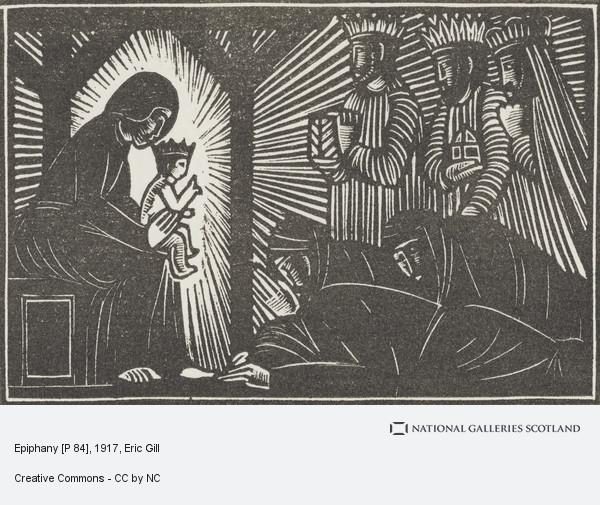
1386 – sometime this year. Battle of Invernahavon. Between the Clan Cameron and the Chattan Confederation forces of Clan Mackintosh, Clan Macpherson and Clan Davidson. On the River Spey. Some Records suggest the year 1396, and the month of May. But if the year is so vague, all the more so is the month.
1406 sometime this year. Battle of Tuiteam Tarbhach when the Mackays wiped out raiders from the Clan MacLeod of Lewis.
1410 sometime this year. University of St Andrews Gilbert Lord Kennedy. Gilbert’s younger brother James Kennedy was Bishop of St Andrews and founder of Scotland’s first university.
1589 Robert, 4th Lord Boyd; One of 24 Lords of the Congregation. Robert Boyd, 5th Lord Boyd of Kilmarnock M, #21513, b. circa 1517, d. 3 January 1589 (modern records record this date as 1589/1590, but nowhere in Scotland nor the British Isles was it anywhere called the year 1590. The year began March 25th Lady Day, and near in time to the vernal equinox, and the year ended March 24th. That dating was how the December was the 10th full month – Latin for 10th, November the 9th month – Latin for 9th, October the 8th month, September the 7th month, etc. for a few thousand years. The years dating would change later In 1600 and 1751.)
Robert Boyd, 5th Lord Boyd of Kilmarnock was born circa 1517. He was the son of Robert Boyd, 4th Lord Boyd of Kilmarnock and Helen Somerville. A contract for the marriage of Robert Boyd, 5th Lord Boyd of Kilmarnock and Margaret Colquhoun was signed in 1535.
· Colquhoun of Luss 1329 2Murray2Drummond 2Hamilton2Stewart 2Miller2Simmons 2Choate zoe
Boyd died on 3 January 1589 (the new year began March 25th). He was buried at Kilmarnock, Ayrshire Scotland. His will was probated on 8 June 1590 (5 months after his death) at Edinburgh, Midlothian, Scotland.
Boyd was Chamberlain of Kilmarnock in 1534. In 1544 he aided the Regent Arran in defeating the Earl of Glencairn at Glasgow. He succeeded to the title of 5th Lord Boyd of Kilmarnock [S., c. 1454] circa 1558. He was invested as a Privy Counsellor (P.C.) on 17 May 1567. He fought in the Battle of Langside on 13 May 1568, where he was a supporter of Queen Mary. He was invested as a Privy Counsellor (P.C.) [Scotland] between 7 September 1571 and 1573. He held the office of Extraordinary Lord of Session [Scotland] between 1573 and 1578. He was invested as a Privy Counsellor (P.C.) [Scotland] in July 1574. He was a Commissioner to treat with England in 1578. He held the office of Extraordinary Lord of Session [Scotland] between 1578 and 1583. He fought in the Raid of Ruthven in August 1579. In June 1583 he was banished after the King’s escape. He was a Commissioner to treat with England in 1585. He held the office of Extraordinary Lord of Session [Scotland] between 1586 and 1588. In February 1585 he was recalled. See the Dictionary of National Biography. Child of Robert Boyd, 5th Lord Boyd of Kilmarnock
Thomas Boyd of Linn
Children of Robert Boyd, 5th Lord Boyd of Kilmarnock and Margaret Colquhoun were Giles Boyd, Agnes Boyd, Robert Boyd (Master of Boyd born b 1547, d. a 14 Oct 1550), Thomas Boyd, 6th Lord Boyd of Kilmarnock born c 1547, d. Jun 1611, Citations [Charles Mosley, editor, Burke’s Peerage, Baronetage & Knightage, 107th edition, 3 volumes (Wilmington, Delaware, U.S.A.: Burke’s Peerage (Genealogical Books) Ltd, 2003), volume 1, page 607. Hereinafter cited as Burke’s Peerage and Baronetage, 107th edition.
Charles Mosley, also volume 1, page 1280; also volume 1, page 860.
G.E. Cokayne; with Vicary Gibbs, H.A. Doubleday, Geoffrey H. White, Duncan Warrand and Lord Howard de Walden, editors, The Complete Peerage of England, Scotland, Ireland, Great Britain and the United Kingdom, Extant, Extinct or Dormant, new ed., 13 volumes in 14 (1910-1959; reprint in 6 volumes, Gloucester, U.K.: Alan Sutton Publishing, 2000), volume II, page 261. Hereinafter cited as The Complete Peerage.
· Boyd Lord Kilmarnock Ayr 1020 2Douglas2Ruthven 2Kinchin2Jared2Simmons 2CHoate zoe ToaG
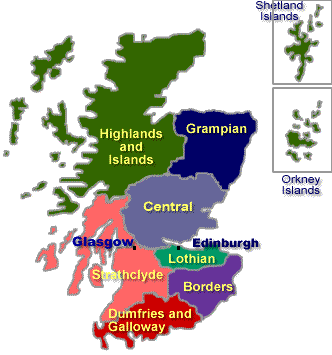
Map placing Lothian on the North Sea, where Boyd’s will was probated.
1599 never occurred in Scotland (1600 began January 1st).
1649 (Edinburgh year] 1648 [London year] Trial of Charles 1st.
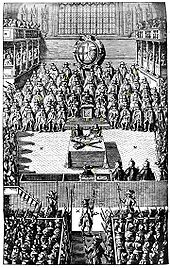
A plate depicting the Trial of Charles 1st on 4 January 1649 [Edinburgh year], [1648 London year].
1746 Prince Charles Edward (81-252) evacuated Glasgow,(81-245), but it was still 1745 in England! Left Glasgow in two columns, one under the Prince
by Kilsyth, the other under Lord George Murray by Cumbernauld. The intention was to form a junction near Stirling with Lord John Drummond,
who was marching from Perth with the army collected there. The Prince lay at Shawfield House, Kilsyth.
Lord George Murray’s column, consisting of six clan battalions and Lord Elcho’s cavalry, halted at Cumbernauld, and marched the following day to Falkirk, whence Lochiel’s regiment was sent to Alloa to escort the artillery to Stirling and subsequently to form the Prince’s guard at Bannockburn.

1751 January 3rd did not occur in England, Ireland, British North America, and British colonies, as 1751 only had 282 days due to the Calendar Act of 1750. 1751 ran from March 25th 1751 (Lady Day) to December 31st 1751, the next date being January 1st, 1752. But this date of January 3rd in 1751 did occur in Scotland and most European countries. Imagine the confusion.
1777 Battle of Princeton. New Jersey. Major General Lord Cornwallis, General Leslie with the 2nd Brigade. Lord Cornwallis’ son marries a Cochrane daughter.
1819 Astronomer Royal for Scotland was the title of the director of the Royal Observatory, Edinburgh until 1995. Charles Piazzi Smyth FRSE FRS FRAS FRSSA born. (3 January 1819 – 21 February 1900), was Astronomer Royal for Scotland from 1846 to 1888. In 1704 Isaac Newton wrote in his book Opticks Book 1, Part 1 ‘ … [telescopes] … cannot be so formed as to take away that confusion of the Rays which arises from the Tremors of the Atmosphere. The only Remedy is a most serene and quiet Air, such as may perhaps be found on the tops of the highest Mountains above the grosser Clouds. In 1856, Smyth petitioned the Admiralty for a grant of £500 to take a telescope to the slopes of Teide in Tenerife (which he spelt Teneriffe) and test whether Newton had been right or not. Robert Stephenson loaned his 140 ton yacht ‘Titania’ for the expedition. Mr. Hugh Pattinson loaned his refracting telescope of 7 inches (18 cm). This was a Thomas Cooke equatorial with setting circles and a driving clock. In 1856, on reaching Tenerife they first set up camp on Mount Guajara 8,900 ft. He made the first positive detection of heat coming from the Moon. He moved to Alta Vista at 10,700 ft (3,300 m) the highest point that mules could reach.
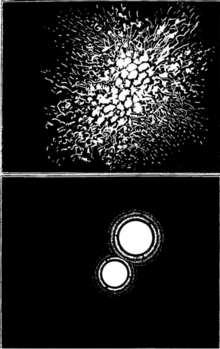
A Piscium as seen from Edinburgh (above) and from Alta Vista at 10,700 ft (3,300 m). The separation is 3.5″ and the diameter of the Airy disc 1.5. The scientific results were described in reports addressed to the Lord Commissioners of the Admiralty, the Royal Society, and the ‘Astronomical Observations made at the Royal Observatory, Edinburgh Vol. XII 1863’ which were widely acclaimed. Piazzi Smyth was the pioneer of the modern practice of placing telescopes at high altitudes to enjoy the best observing conditions. ‘Teneriffe, an astronomers Experiment’ was the first book ever illustrated by stereoscopic photographs (‘photo-stereographs’). In 1871 and 1872 Smyth investigated the spectra of the aurora, and zodiaca light. He recommended the use of the rain-band for weather forecasting and discovered, in conjunction with Alexander Stewart Herschel, the harmonic relation between the rays emitted by carbon monoxide. In 1877-1878 he constructed at Lisbon a map of the solar spectrum for which he received the Makdougall Brisbane Prize in 1880. Smyth carried out further spectroscopic researches at Madeira in 1880 and at Winchester in 1884. James Lindsay, Earl of Crawford (clan Lindsay) made a donation of new astronomical instruments and the complete Bibliotheca Lindesiana in order that a new observatory could be founded.
· Crawford of Drongan and Haining 1100 2 Douglas2 Stewart2 Ruthven2 Kinchin2 Jared2 Simmons2 Choate zoe
Thanks to this donation, the new Royal Observatory on Blackford Hill was opened in 1896. Smyth’s sisters were Henrietta Grace Smyth, who married Reverend Baden Powell and was mother of Robert Baden-Powell, 1st Baron Baden-Powell (founder of the world Scouting Movement).
1840 Somewhere between Glasgow and Bishopton. Elders Samuel Mulliner and Alexander Wright arrived. Appropriately, both had been born in Scotland. Both independently emigrated to Canada, joined the Church of Jesus Christ of Latter-day Saints, and then made their ways to Missouri and Ohio to join the Saints. Mulliner and Wright eventually met and were called to serve missions in their native land. Over a century later John Grant of Galashiels was baptized only four days after meeting the missionaries. Grant was ill in bed when the elders called on him sixteen years ago, and after a brief discussion they left him the Book of Mormon to read. He did this immediately, as he had nothing else to do. Grant soon knew the book was true, and he believed the testimony of Joseph Smith. Grant knew nothing else about the Church, but on the strength of that testimony he decided to be baptized. By 1978 Grant is a counselor in the mission presidency. Ensign October 1978.
1862 By January of 1862, even the Edinburgh Review would publicly admit that the voyage across the Atlantic fora company of Latter-day Saints was superior to other immigrant journeys. Thus wrote Charles Dickens as the Uncommercial Traveller pages 211 et following:
‘The ordinary emigrant is exposed to all the chances and misadventures of a heterogeneous, childish, mannerless crowd during the voyage, and to the merciless cupidity of land-sharks the moment he has touched the opposite shore. But the [The Church of Jesus Christ of Latter-day Saints] ship is a Family under strong and accepted discipline with every provision for comfort, decorum, and internal peace. On his arrival in the New World the wanderer is received into a confraternity which speeds him onwards with as little hardship and anxiety as the circumstances permit and he is passed on from friend to friend, till he reaches the promised home.’
And Dickens added-
UNCOMMERCIAL. I am told that these people now on board are principally from the South of England?
[THE CHURCH OF JESUS CHRIST OF LATTER-DAY SAINTS] AGENT. And from Wales. That’s true.
UNCOMMERCIAL. Do you get many Scotch?
[THE CHURCH OF JESUS CHRIST OF LATTER-DAY SAINTS] AGENT. Not Many.
UNCOMMERCIAL. Highlanders, for instance?
[THE CHURCH OF JESUS CHRIST OF LATTER-DAY SAINTS] AGENT. No, not Highlanders. They ain’t interested enough in universal brotherhood and peace and good will.
UNCOMMERCIAL. The Old fighting blood is strong in them?
[THE CHURCH OF JESUS CHRIST OF LATTER-DAY SAINTS] AGENT. Well, yes. And besides; they’ve no faith.
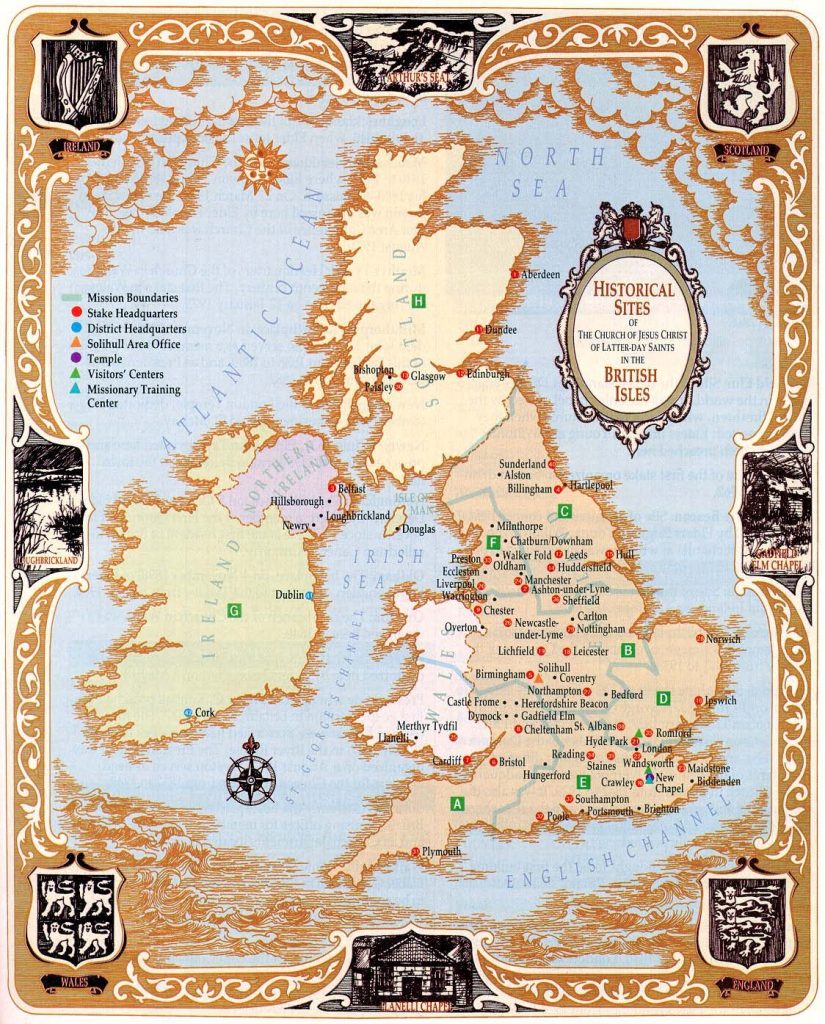
Historical Sites of The Church of Jesus Christ of Latter-Day Saints in the British Isles.
1959 Alaska becomes a state. Scottish names include (Wikipedia)-
Anderson, Houston, Kincaid Park, Point MacKenzie
1975 Danica McKellar, actress, (born January 3, 1975) is an American actress, academic, and education advocate. Known as Winnie Cooper in the television show The Wonder Years, with Scots Father. McKellar is the author of The New York Times bestselling book Math Doesn’t Suck: How to Survive Middle-School Math without Losing Your Mind or Breaking a Nail,
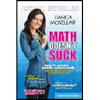
1982 Humor from back in the day of the phone book. Scots’ telephone directories made ideal personal address books. ‘Simply crossed oot the names and address of people ye dinna know.’
Utah Standard News depends on the support of readers like you.
Good Journalism requires time, expertise, passion and money. We know you appreciate the coverage here. Please help us to continue as an alternative news website by becoming a subscriber or making a donation. To learn more about our subscription options or make a donation, click here.
To Advertise on UtahStandardNews.com, please contact us at: ed@utahstandardnews.com.


Comments - No Responses to “January 3rd Scots Book of Days The Epiphany”
Sure is empty down here...